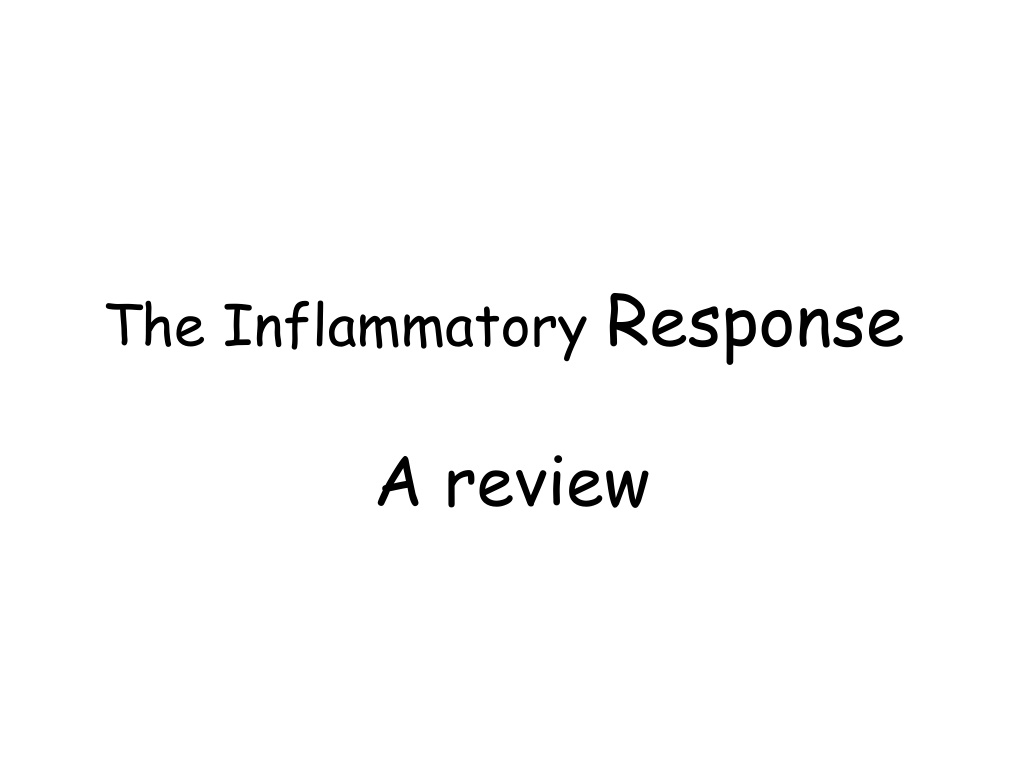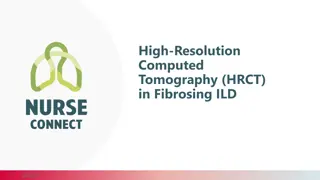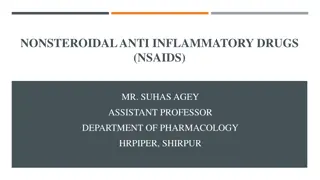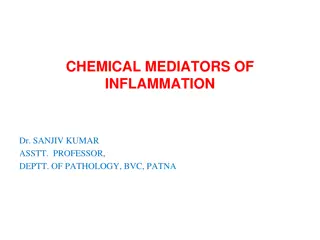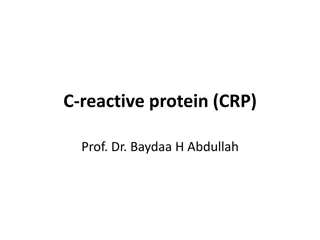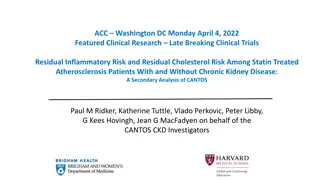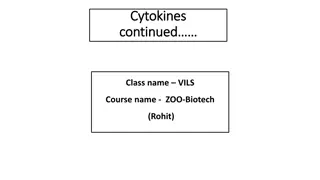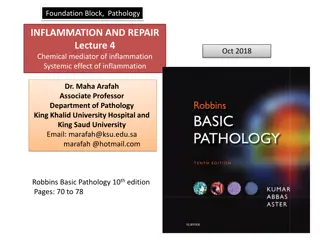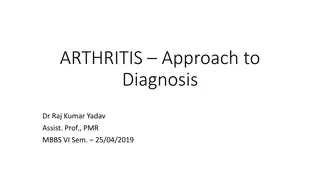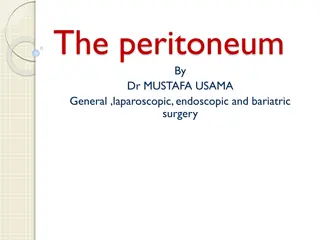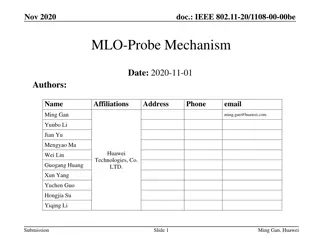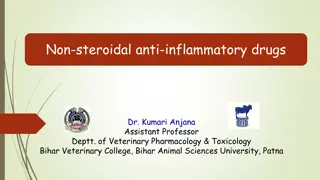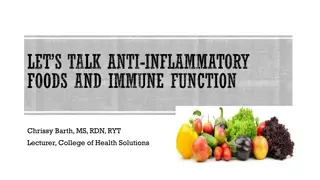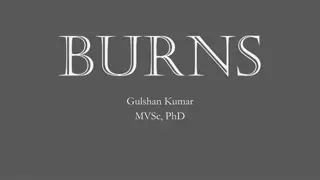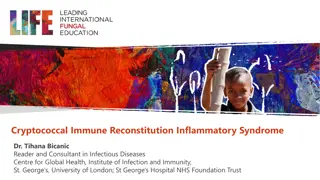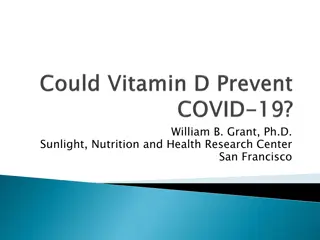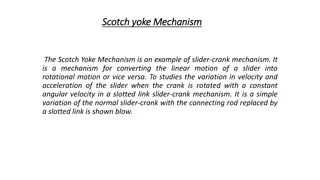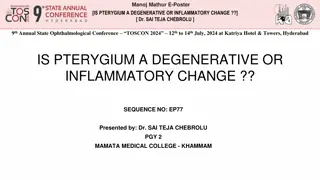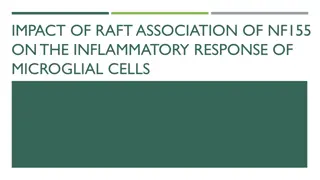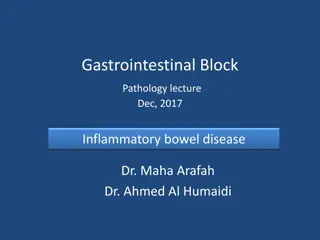Understanding the Inflammatory Response Mechanism
The inflammatory response is a crucial defense mechanism of the immune system. It comprises three lines of defense aimed at protecting the body from harmful pathogens. When a barrier is breached, such as by a splinter carrying bacteria, the inflammatory process is initiated. This includes the release of histamine, recruitment of immune cells like macrophages and neutrophils, and eventual tissue healing. The Inflammatory Response helps prevent infections' spread and aids in removing pathogens and damaged tissues, making it a vital process for maintaining health.
Download Presentation

Please find below an Image/Link to download the presentation.
The content on the website is provided AS IS for your information and personal use only. It may not be sold, licensed, or shared on other websites without obtaining consent from the author. Download presentation by click this link. If you encounter any issues during the download, it is possible that the publisher has removed the file from their server.
E N D
Presentation Transcript
The Inflammatory Response A review
The 3 Lines of Defense FIRST line: Barrier protection non-specific (treats each pathogen the same) acts to prevent the pathogen from getting into the body skin, mucous membranes, tears, sweat SECOND line: Acts to destroy/inactivate a pathogen if it breaks the barriers of the first line non-specific -phagocytic leukocytes neutrophils and macrophages THIRD line: Acts to destroy specific pathogens that are not destroyed/inactivated by the second line specific Lymphocytes T cells, B cells
The Inflammatory Response Part of the second line of defense The pathogen has gotten through the barrier protections and is in the tissues.
Uhoh! Splinter!!!!
Whats happening? Splinter (or pin) has broken through the barrier, carrying bacteria into the tissue. Mast cells release histamine. Macrophages that are in the tissue secrete chemical signals (cytokines) causes nearby capillaries to dilate and makes them more permeable (leaky).
Whats happening? Histamine released from mast cells cause more macrophages to enter from the blood stream. Cytokines released from macrophages increase the blood flow to the site and call more neutrophils and antimicrobial peptides to the site. now arrive and pass through the leaky capillaries into the tissue ingest and kill the invader by phagocytosis and then fusion w/lysosomes More blood redness, increase in temp, fluid leaks from the vessel into the tissue swelling
Whats happening? Neutrophils continue to digest the bacteria and cell debris. Inflammation subsides and tissue begins to heal.
Hooray for the Inflammatory Response!!! The Inflammatory Response is a GOOD thing, because it: Prevents the spread of infection. Helps remove pathogens and damaged tissues.
But.theres a dark side What if the inflammatory response of the immune system is continually stimulated? too much of a good thing For example, there can be different types of stimulants: 1)Infectious: unresolved viral or bacterial infection 2)Noninfectious: pollen, smoking, autoimmune reaction, obesity and tissue damage from wounds, tumors, heart disease, atherosclerosis and autoimmune disease This can lead to
Chronic Inflammation
Chronic Inflammation is NOT a good thing: CI can lead to: Development of Type 2 diabetes, exacerbation of heart, liver and kidney disease, Alzheimer s, some cancers (perhaps from increased mutational rate and enhanced angiogenesis), fibrosis
Whats the difference between Acute Inflammation and Chronic inflammation? Acute inflammation: the normal Inflammatory response neutrophils dominate. you feel and see it (pain, redness, swelling, heat). Inflammatory cytokines are expressed and do their job and resolution occurs relatively quickly it s over and done with. Chronic inflammation (CI): macrophages dominate. T cells and B cells become involved. CI is silent progresses without one even knowing it s happening Persistent, increased expression of inflammatory cytokines.
What are these cytokines? A trio of 3 proinflammatory cytokines always predominates. IL-1 (interleukin -1) IL-6 (interleukin -6) TNF- (tumor necrosis factor-alpha)
What happens because of these cytokines? IL-1 stimulated very early by macrophages increases the permeability of capillaries calls more neutrophils to the tissue IL-6 secreted by T cells and macrophages stimulates the inflammatory response increases the production of neutrophils in the bone marrow TNF- activates macrophages increases permeability of capillaries
So secretion of these cytokines just continues the inflammatory process
Reminder Why are we concerned about chronic inflammation? Recent studies have suggested that the constant secretion of these cytokines and stimulation of the inflammatory response can lead to . Type 2 diabetes Exacerbation of heart, liver and kidney disease Alzheimer s disease Fibrosis of some tissues Some cancers
HOW????? Let s briefly review how cells communicate with each other cell-signaling
Three stages of Cell Signaling 1. RECEPTION a signaling molecule binds to a SPECIFIC receptor protein molecule 2. TRANSDUCTION This causes the receptor protein to change shape. Now the signal is changed into another form that the cell can recognize that will cause it to respond in a specific way. This may occur in multiple steps called a CASCADE. 3. RESPONSE The cell responds in a specific way and maybe the production of a particular protein.
Reminder: Causes of chronic inflammation can be infectious or non-infectious Infectious: such as an unresolved viral or microbial infection, which results in continual immune stimulation Example: Periodontitis from persistent dental infections HOW?? -there is a constant source of bacteria the immune system is constantly being required to try to rid the body of these bacteria constant inflammation
Non infectious causes pollen, smoking, pollution, autoimmune reaction and tissue damage from wounds that don t heal, tumors, heart disease and atherosclerosis and obesity! Pollen and particles from smoking and pollution can constantly irritate certain tissues Tissue damage from atherosclerosis, heart disease and wounds that don t heal can constantly irritate certain tissues, as well.
Huh?OBESITY??? How can having too many adipocytes (fat cells) lead to a state of chronic inflammation? 1) Adipocytes can secrete IL-6 ..but that s not the end of the story .. 2) excess free fatty acids bind to receptors on the adipocytes 3) cell signaling now leads to increase of the release of IL-6
So what can happen now? IL-6 then binds to receptors on the pancreatic beta cell .. this prevents the cell from getting the signal to make insulin Result????
If CI is silent, but dangerous, is there a way for someone to know if it s happening in their body? Reminder: Inflammatory markers: 1) IL-6 2) IL-1 3) TNF- CI can be determined by measuring one of the inflammatory markers in a sample of their blood.
THE ELISA We can determine if too much of the protein IL-6 is in someone s blood by doing a laboratory test called an ELISA
